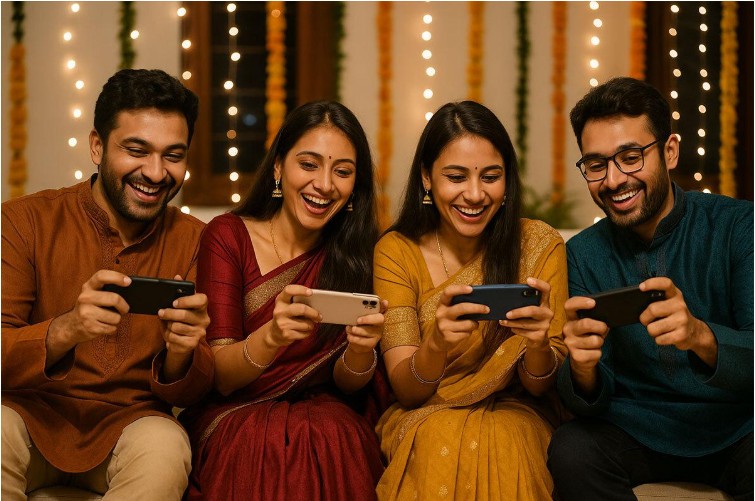Last weekend, I went to two completely different parties. The first one? Total snooze-fest. Everyone stood around clutching their drinks, making awkward small talk about work and traffic patterns. I left after an hour claiming I had a headache, which wasn’t even a lie by that point. The second party was at my coworker Janet’s place, and honestly, I didn’t want to leave. People were laughing so hard they were crying, exchanging phone numbers, and making plans for the following weekend. Same basic setup—food, drinks, music—but the energy was completely different. Janet had figured out something that most party hosts miss: people don’t just want to attend celebrations, they want to feel connected to them.
Simple Games That Actually Break Barriers
I used to think icebreakers were punishment disguised as fun, probably because I’d only experienced the corporate training variety. But Janet introduced us to this game where you share three statements about yourself—two true, one false—and everyone tries to guess which is the lie. Sounds basic, right? Wrong. We discovered that Tim from accounting once accidentally joined a protest march in college while looking for a bathroom, and that Maria’s grandmother taught her to pick locks as a child. These weren’t just random facts; they were conversation starters that lasted the entire evening. The quiet people suddenly had interesting stories to tell, and the loud ones had to actually listen for once.
Social Activities That Level the Playing Field
What makes certain party activities work so well is how they create equal footing for everyone involved. Drinking games, when chosen thoughtfully, accomplish this perfectly because they’re designed to be silly rather than competitive. I’m not talking about those college-level challenges that end with someone face-down on the bathroom floor. More like clever trivia games or creative challenges that happen to involve beverages as props. The alcohol becomes an excuse to drop your guard and be ridiculous with people you might otherwise treat formally. At Janet’s party, we played this word association game that had everyone from the shy intern to the company VP doubled over with laughter at the absurd connections we were making.
Getting Real Stories Instead of Small Talk
Here’s what I’ve noticed about successful gatherings: they find ways to bypass surface-level conversation and get to the good stuff. My family stumbled onto this accidentally during Thanksgiving a few years back when my aunt suggested we each share our most embarrassing moment from childhood. What started as a way to kill time while waiting for the turkey became this amazing storytelling session where we learned things about each other that we’d never known despite decades of family dinners. My stoic grandfather told us about the time he got his head stuck in a fence trying to retrieve a baseball, and suddenly he seemed more human and approachable than he ever had before.
Creative Projects That Spark Collaboration
There’s something about working on a project together that breaks down social walls faster than any conversation technique. At my friend Mike’s birthday party, his wife set up this massive canvas where guests could add their own artistic contribution throughout the evening. It started with one person drawing a simple tree, then someone else added birds, then flowers, then a sunset, and before we knew it, we had created this collaborative masterpiece that represented all of our different styles and personalities. People who had never met before were mixing colors, sharing brushes, and building on each other’s ideas. The finished artwork wasn’t going to win any prizes, but it captured something special about that particular group of people on that particular night.
Music That Makes People Forget Their Inhibitions
Dancing terrifies most adults, but music itself has this incredible power to transform social dynamics. You don’t need to be a DJ or have perfect sound equipment—just songs that make people smile and someone willing to be the first one moving. I’ve watched the most buttoned-up professionals become completely different people when their favorite song from high school starts playing. The transformation is immediate and infectious. At Janet’s party, someone put on “Dancing Queen” and within thirty seconds, half the room was singing along and swaying to the beat. Nobody was performing or trying to impress anyone; they were just enjoying the shared experience of music that connected them to good memories.
Photo Challenges That Create Instant Memories
Structured photo activities work because they give people a reason to interact while documenting the celebration at the same time. My cousin’s wedding had this genius idea where they gave each table a different theme and challenged guests to take creative photos representing their assigned concept. Our table got “childhood memories,” so we spent the entire cocktail hour recreating playground games and silly childhood poses. The bride and groom ended up with hundreds of candid shots of their guests having genuine fun, plus everyone had shared experiences to laugh about during dinner. Much better than those stiff formal photos where everyone looks like they’re being held hostage.
Food Experiences That Build Connections
Sharing food creates instant intimacy, especially when there’s some kind of interactive element involved. The best potluck parties I’ve attended work because they give people natural conversation starters. “Oh, you made this? What’s the story behind it?” leads to tales about family traditions, cultural backgrounds, and childhood memories. Last month at a neighborhood gathering, Mrs. Chen brought these incredible dumplings and ended up teaching half the party how to fold them properly. We spent two hours around her kitchen table, laughing at our clumsy attempts and sharing stories about our own family recipes. Those connections extended far beyond the party itself—several people have started a monthly cooking group based on that evening.
Gratitude Activities That Touch Hearts
Celebrations provide perfect opportunities for people to express appreciation that might otherwise never be spoken. Simple activities like gratitude circles, anonymous appreciation notes, or structured opportunities to acknowledge the guest of honor create emotional bonds that last long after the party ends. At my daughter’s graduation celebration, we asked each guest to write down their favorite memory of her and share it with the group. The genuine affection expressed that day strengthened relationships across our entire extended family and friend network. It’s amazing how much closer people feel when they take time to acknowledge the positive impact others have had on their lives.
Conclusion
The difference between forgettable parties and unforgettable ones isn’t about budget or location—it’s about creating opportunities for genuine human connection. These activities work because they remove the barriers that keep people from interacting authentically and give them permission to be themselves. Whether you’re planning a small family gathering or a large community celebration, incorporating some of these elements will help ensure that everyone leaves feeling more connected to the people around them than when they arrived. After all, the best parties aren’t remembered for their decorations or menu—they’re remembered for the moments when strangers became friends and good times became great stories.














